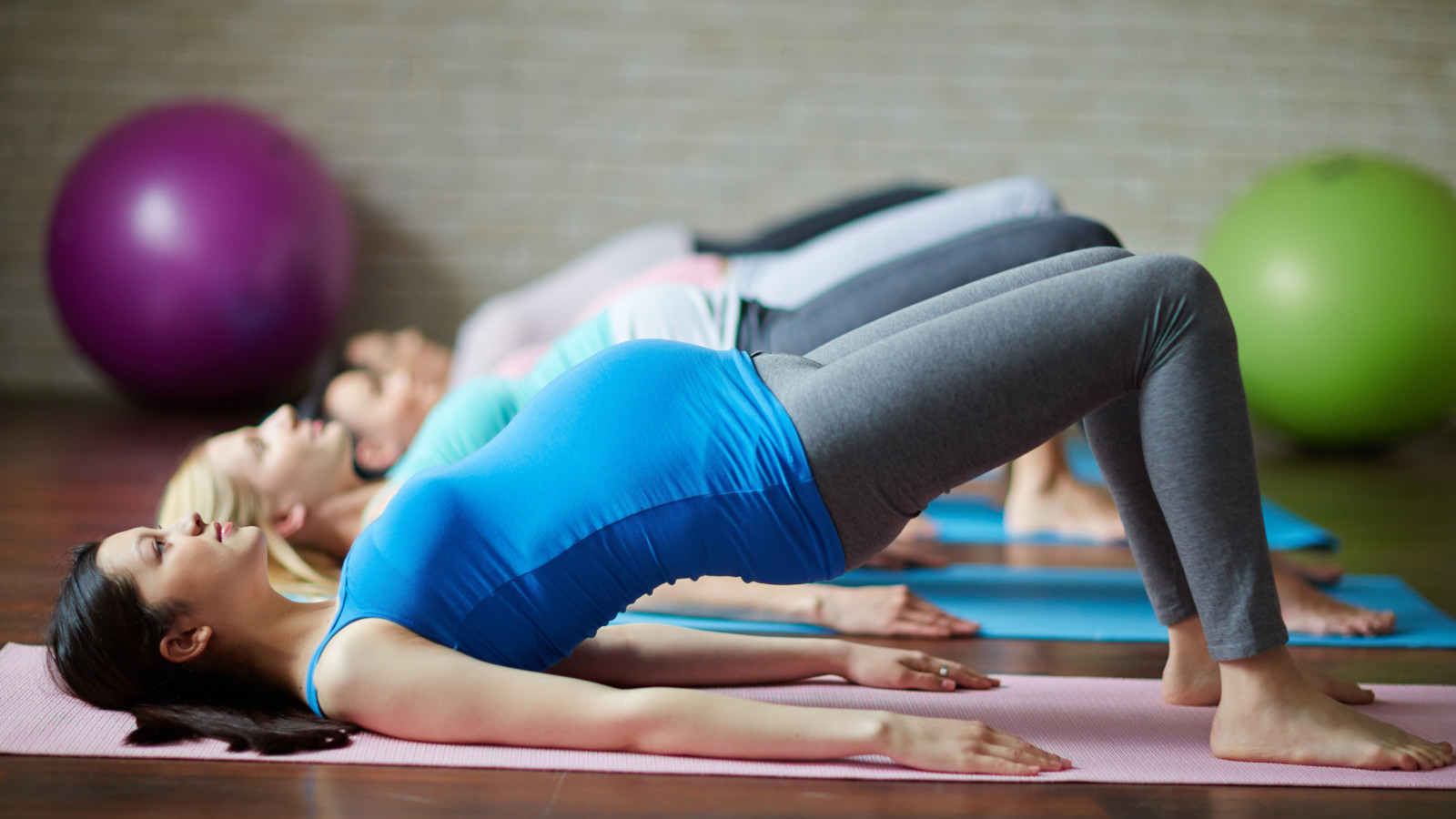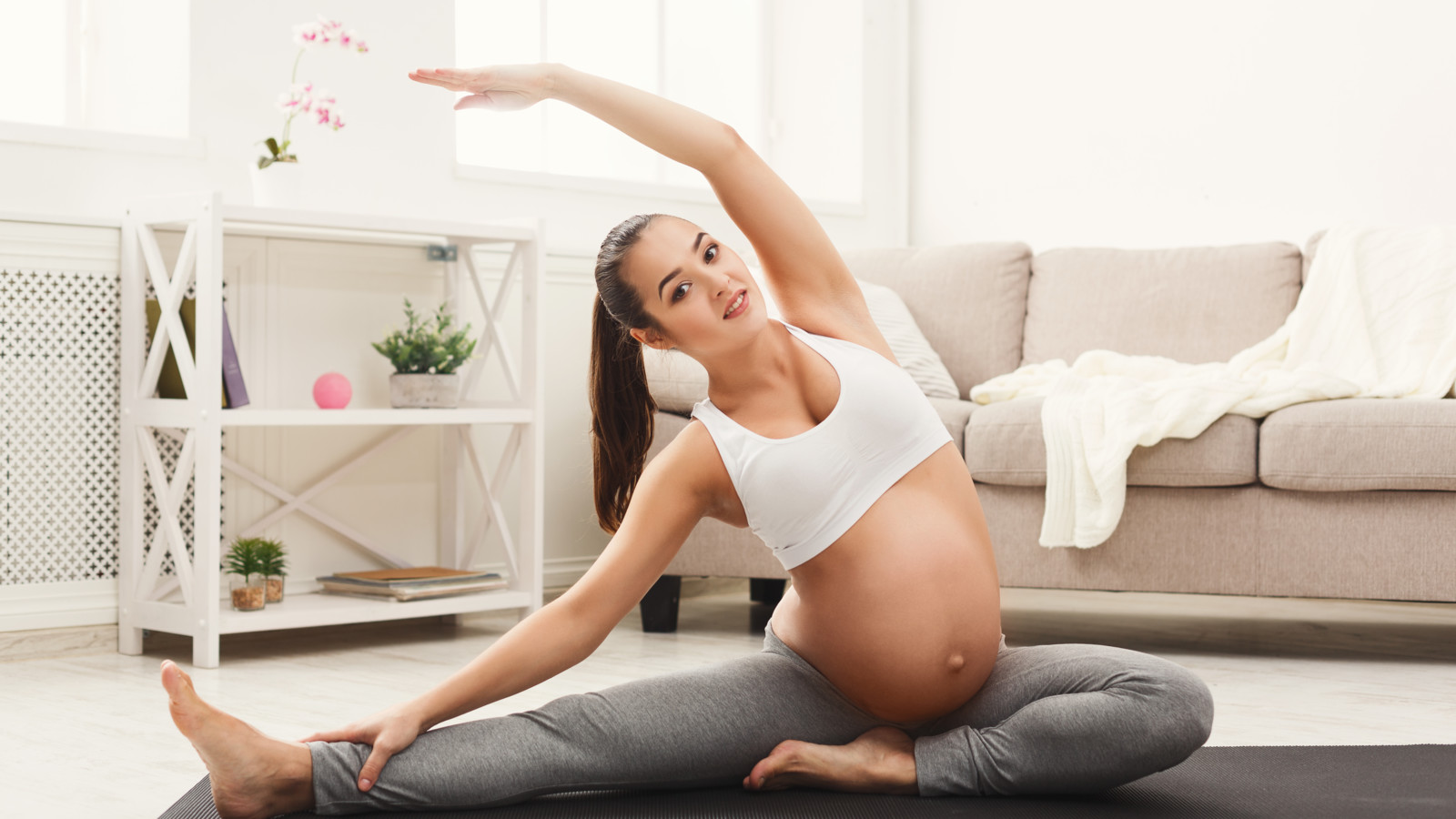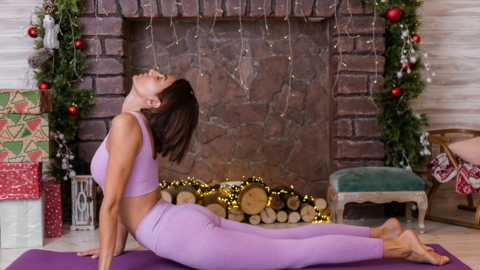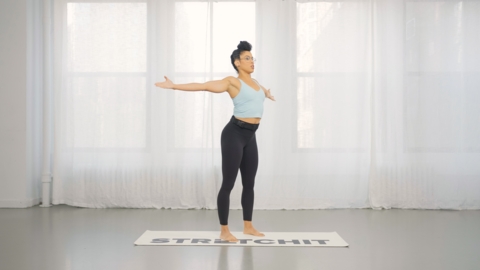Pregnant? Here’s What to Know About Stretching When You’re Expecting!
STRETCHIT co-founder Natasha Nikolaeva is currently 27 weeks pregnant and we are so excited for her! In this article, we share some insights on stretching while pregnant as well as general advice for staying active during your pregnancy.

Your personal prenatal fitness journey
Your pregnancy is a journey unique to your body. It’s an amazing time to celebrate yourself and gain a greater understanding and appreciation of what your body is capable of. It’s a time to nourish your body with healthy habits that keep you feeling good, and a time to be even more mindful of what’s right for you.
For most women, there are major benefits to staying active during pregnancy. As a first step, it’s important to check with your doctor for clearance on your fitness routine, and then to continue touching base with them throughout your pregnancy to make sure you’re staying safe and anticipating any issues. The best workout routine for your body will depend on your state of fitness pre-pregnancy, as well as any health issues or contraindications that might impact what is appropriate for your pregnancy. For women without contraindications to physical activity, exercise is safe for both the woman and your baby1.

The benefits of staying fit during pregnancy
Exercise will help you maintain your physical health and well-being while your body undergoes the changes and challenges that come with preparing for childbirth. There may be some barriers to staying active, such as nausea or fatigue in early pregnancy or even just the increased size of your belly during late pregnancy. Studies show that daily exercise, especially low-impact, moderate-intensity physical activity like walking and stretching may actually help you reduce some of the symptoms of nausea, fatigue, and discomfort2. Cheers to that! And all the more reason to stretch as a part of your pregnancy routine.
Here are some reasons to stay committed to working out during your pregnancy. Exercise can help you3:
- Maintain a healthy body weight
- Maintain your muscular strength, cardio fitness, and flexibility
- Ease and prevent the aches and pains of pregnancy (especially back pain, varicose veins, and constipation)
- Improve your posture and coordination, body awareness, and balance
- Reduce stress
- Help you feel more confident and boost your self-esteem
- Prevent and lower the risk of emotional health problems like depression and anxiety, as well as physical problems like hypertension and pre-term delivery
- Be better prepared for labor and postnatal recovery
Moderate-intensity exercise is widely prescribed as the best way to stay fit while pregnant. Getting 30 minutes or more of moderate exercise on most, if not all, days of the week is advised for normal pregnancies4. Walking, cycling, swimming, low-impact aerobics, and stretching are all moderate-intensity exercises that are great activity choices. High-intensity workouts can also be safe if you were training like that before you got pregnant, but it’s important not to push yourself in extreme ways during your prenatal workouts (i.e.—it’s not time to start training a new contortion handstand or to sign up for a triathlon!). Work out to stay healthy for you and your baby, not to hit a new personal record or crazy flexibility goal!

Stretching as a safe prenatal workout
Stretching gives you that perfect blend of moderate-intensity exercises and feel-good poses that can help you stay fit and strong during your pregnancy. As your body changes, certain areas may become tighter and you’ll need to modify or skip some exercises. The Journal of Perinatal Education notes that the pectorals, hamstrings, hip adductors, and hip flexors may “need special attention since they have the tendency to become tight” in pregnancy5 (hello front split and middle split stretching!). The Journal also dispels the myth that pregnancy hormones will “predispose a woman to soft tissue tears” in deep stretches. No scientific evidence supports this claim of being more likely to tear6, but just like any flexibility training session, it’s important to not stretch to the point of pain. Some discomfort is okay (as is usual during flexibility training), but sharp pain is not (back off immediately if you experience it!).
What else should you be mindful of when stretching? The Journal recommends avoiding fast, ballistic movements late in pregnancy. It’s also advised not to exercise in a supine position after the first trimester, which can restrict blood flow to the baby and cause other problems7. In general, if the exercises are getting too intense, just ease up, use your props for support (like yoga blocks), or scratch the exercise altogether. Make sure you continue to engage your muscles while you’re stretching—just like you would normally—so that you are supporting the body’s range of motion.
"Regular exercise can help you cope with the physical changes of pregnancy and build stamina for the challenges ahead.”

Here are some tips from Natasha’s own experience stretching during the first and second trimesters:
“For the first 5 weeks, I didn't feel any difference in my body and training. I was able to do all the exercises while taking STRETCHIT classes and my training regimen was exactly the same as before pregnancy. Around about week 6, morning sickness and fatigue started. Weeks 6-16 were the hardest. I had to significantly slow down my training. Out of 5-7 classes/week (my regular schedule), I was only able to do 1-2 classes. I didn't have any choice but to learn to respect my body and not push myself. After week 17, I got my energy back, and I’m back to stretching 5-7 days a week. I’ve also added 45-minute walks on most days to keep my body moving.
In terms, of specific exercises, here’s what I’ve discovered:
- I’m LOVING hip-opening exercises. They feel amazing!
- NO forward folds of any kind - pike, standing, plow, etc. Instead, I'll do these exercises in a straddle or V-shape to make room for my belly. If I'm sitting in pike and don't feel like doing a straddle, I do side bends instead of forward bends. I substitute the plow pose with a straddle laying on my back since bringing my legs over my head doesn't feel comfortable.
- NO laying on the belly - I can still do cobra but lowering down to sphinx or all the way to the floor doesn't feel right. So, I do the exercises either in cobra or on my hands and knees.
- My belly gets in the way of child's pose so I do puppy pose instead. Shoulder-opening exercises have always been my favorite!
- Be extra careful with backbends. I go only as far as I don't feel any pulling in the belly and use more of my upper back and shoulders. During weeks 16-25, I felt very limited in my lower back - I couldn't bend because I felt stiff in the belly, but now the baby is moving up which gives me more space to bend. For camel pose, I support my weight by putting my hands on my heels - but NO hanging backbends of any kind. I've been skipping bridges since about week 15. My hamstrings are a lot tighter so I've been engaging the legs even more in all relevant stretches. I can still do splits and sometimes even oversplits but they don't come as easily as they used to!
We hope this guide will help you connect with what fitness routine will make you feel the best during your pregnancy. Listen to your body and let it guide you toward the stretches and exercises that feel appropriate and safe for your body. We wish you and your little one health and happiness!

" In giving birth to our babies, we may find that we give birth to new possibilities within ourselves.”
1 Hinman SK, Smith KB, Quillen DM, Smith MS. Exercise in Pregnancy: A Clinical Review. Sports Health. 2015;7(6):527-31.
2 Downs DS, Chasan-Taber L,
Evenson KR, Leiferman J, Yeo S. Physical activity and pregnancy: past and present evidence and future recommendations. Res Q Exerc Sport. 2012;83(4):485-502.
3 Hammer RL, Perkins J, Parr R. Exercise during the childbearing year. J Perinat Educ. 2000;9(1):1-14.
4 Hinman SK, Smith KB, Quillen DM, Smith MS. Exercise in Pregnancy: A Clinical Review. Sports Health. 2015;7(6):527-31.
5 Hammer RL, Perkins J, Parr R. Exercise during the childbearing year. J Perinat Educ. 2000;9(1):1-14.
6 Hammer RL, Perkins J, Parr R. Exercise during the childbearing year. J Perinat Educ. 2000;9(1):1-14
7 Warland J. Back to basics: avoiding the supine position in pregnancy. J Physiol. 2017;595(4):1017-1018.
8 Pregnancy and exercise: Baby, let's move! Mayo Clinic. https://www.mayoclinic.org/healthy-lifestyle/pregnancy-week-by-week/in-depth/pregnancy-and-exercise/art-20046896. Published June 9, 2016. Accessed February 14, 2019




